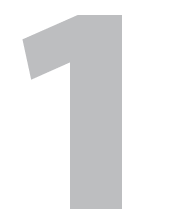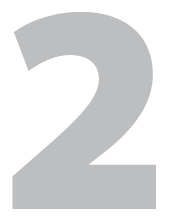HOW TO GET BEST PRINTING
Creating a print that matches the colour, line quality, material and print type used in the original work of art is veritably important to get fineprint. However, If you’re planning to print stationery items like business cards, letterheads, leaflets NCR (Carbon copy books). You would like to follow your commercial colours with pantone colors, we’d suggest choosing offset printing. It’ll get better results than digital printing.
Indeed small quantity item, colours are process colour (CMYK combination) it will better digital print.



Choose the best printing method that best suits your needs..
Do not use RGB colour for printing purposes, RGB colours are only better screen view like, eBook/ Website/ Mobile applications. However, always make sure to produce the artwork with CMYK or Pantone colours, If you plan to print the artwork..

The Highest Quality`
Digital printing
Digital printing is the process of printing directly from a digital image to various media. It usually refers to professional printing that prints small works from desktop publishing and other digital sources.
Digital printing per page is more expensive than traditional offset printing methods, but this price is usually offset by eliminating all the technical steps required to make printing plates. It allows on-demand printing, short turnaround time, and modification of the image used in each impression. Job gains and the increasing capacity of digital presses mean that digital printing is reaching the point where it can adapt or override offset printing technology to produce large print runs of thousands of sheets at low cost.
Advantage of digital printing
- can print small quantity
- Quick print
- Low labor costs
- Any kind of material support
Disadvantages
-
High cost for bulk printing
-
Printing limitations of pantone colors
- Limitations on scratch media
The Highest Quality`
Large format printing
Plotter is a printer is a computer hardware tool used to print artworks. Instead of toner, plotters draw multiple lines on paper using a device like pen or pencil, much like a traditional printer. These tools have more or less been phased out with the use of wide format printers. it support roll type material, it support any size of print. plotter print mostly used for Banners, Rollup and wall sticker printing
Advantage of digital printing
- can print small quantity
- Quick print
- Low labor costs
- Print Banners poster at any size
Disadvantages
-
Printing limitations of pantone colours
- High cost for small size print
The BEST Quality`
Screen printing
Screen printing (traditionally called silkscreen printing) is a printing technique that uses a mesh to transfer ink to the subscript, except where the ink is inaccessible. A blade or squeegee moves across the screen to fill ink in the open mesh apertures, causing a reverse stroke and then touching the screen with a contact line. This moistens the ink substrate and pulls it out of the mesh apertures as the screen springs back after the blade has passed. One colour is printed at a time, so multiple screens can be used to create a multi-colour image or design.
This technology is used mostly to print in clothes, but also to print on many products such as decals, clocks, watch faces and balloons.
The BEST WAY to
3D Printing
3D printing or additive manufacturing is the production of a 3D object. The term “3D printing” refers to the various processes by which computer-controlled materials are deposited, assembled, and solidified (such as plastics and liquids). , Or powdered grains, usually layer by layer).
The length of 3D printing and the range of materials have increased, and some 3D printing processes are considered practical as an industrial-production technology, so the term additive design can be used synonymously with 3D printing. , Or as one of the main advantages of design or sophistication. It is impossible to make by hand, including hollow parts or sections with internal truss structures capable of reducing weight. Fused deposition modeling (FDM), which uses a continuous filament of a thermoplastic material.

Submit your design
Use High resolution / Vector Graphics.
Resolutions / DPI
resolution refers to the number of pixels per forecourt inch. The standard resolution for a published image is 300 ppi.
Resolution has a huge impact on whether or not your print is professional. For illustration, make sure you have enough pixels on your artboard to enlarge the image without losing quality.
Vector
Vector images are points, shapes, and strokes. Each vector is actually made up of unnoticeable points on a grid. The points are connected by fine equations. This means that as you increase the size of a vector, the mathematics behind the curtain keeps everything in exact proportion. For this reason. They’re more flexible and easier to gauge than pixelated challengers, making it ideal for any large-scale printing design. Scale.
Printing Colours
The main color biographies are RGB, CMYK and Pantone.
CMYK Colours
CYMK-Cyan, Yellow, Magenta, Black-is the standard for printing. The colors are mixed in the printing process and CYMK is most accurate formulti-color systems.
Managing these color biographies for printing and document transfer is another important step in maintaining color integrity.
Pantone Colours
Spot colours of the Pantone system cannot be mimicked with CMYK, but 13 basic pigments (14 including black) are mixed in certain amounts and are called base colours.
Spot colours is best way to keep your corporate color unique
RGB Colours
RGB stands for Red, Green and Blue. It represents the colors that the defenses emit, which makes it the most suitable choice when designing digital accoutrements.
Finishing works

Choose suitable material
Papers are comes in a variety of textures ranging from the ultra smooth to the uniquely textured. choose your right material those suitable for your artworks

Foiling
Support variety of foiling like Gold Foil, Silver Foil, Red foiling etc. Adding foil to your custom print items is a multi-step process that uses heat, pressure, dye or toner to attach the foil layer to the stock.

Varnish / Spot UV / Powder UV
Sometimes referred to as ‘spot varnish’, ‘spot lamination’, ‘spot gloss’ or ‘UV printing’, spot UV is a hard clear coating of a polymer applied over printed material or on uncoated substrates. It is applied in liquid form and then exposed to ultraviolet (UV) light, which binds and dries instantly

Velvet Lamination, Glossy & Mat Lamination
Velvet lamination gives a soft texture comparable to fresh peach! Also known as “velvet-feel”, it adds a protective layer that creates long-lasting prints with a delicate feel.

Die Cutting
Die cutting is refers to a process in which you use a machine to mass-produce cut-out shapes. You can recreate the same shape and exact dimensions without the use of scissors, stencils or kraft knife. This saves time and makes your cut out shapes professional and consistent.

Your Brand or Design on T-Shirts, Bags & More.
Get your unique artwork with fine quality print output from best quality
